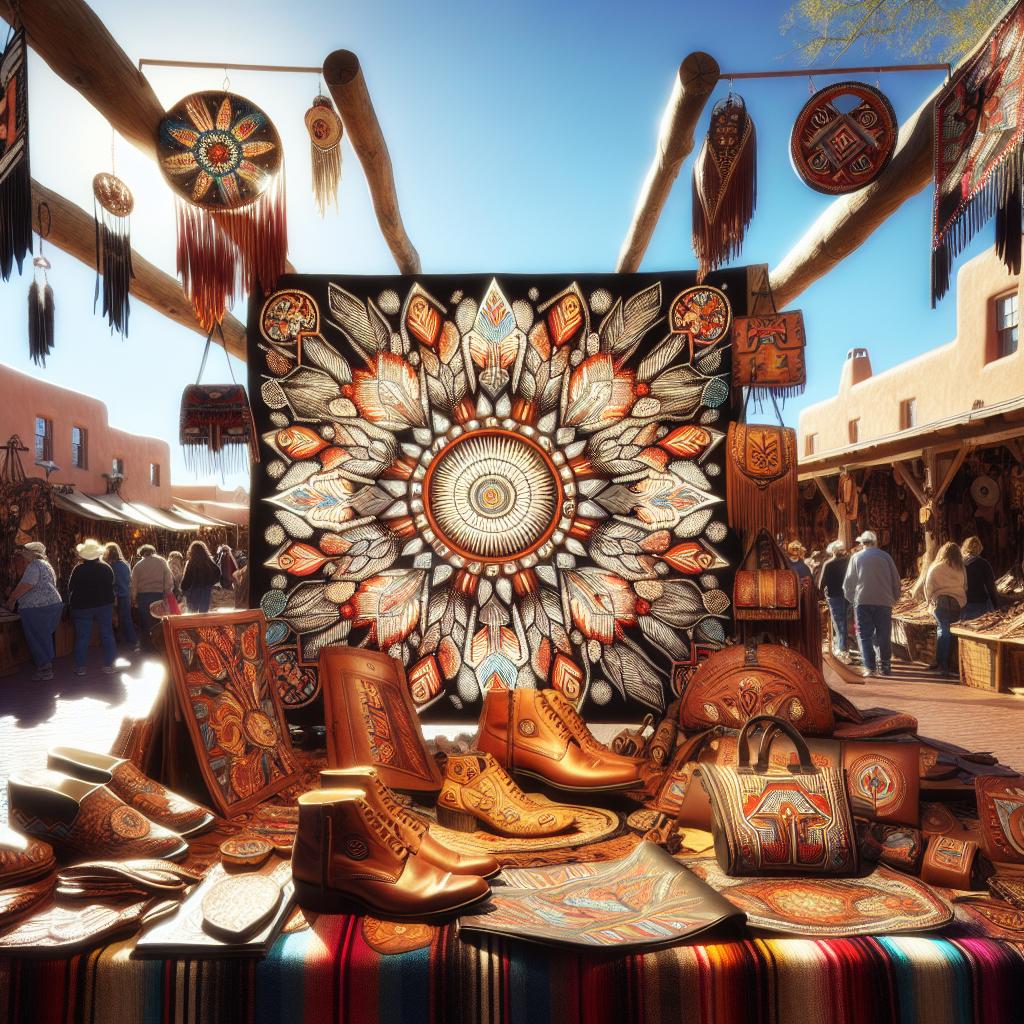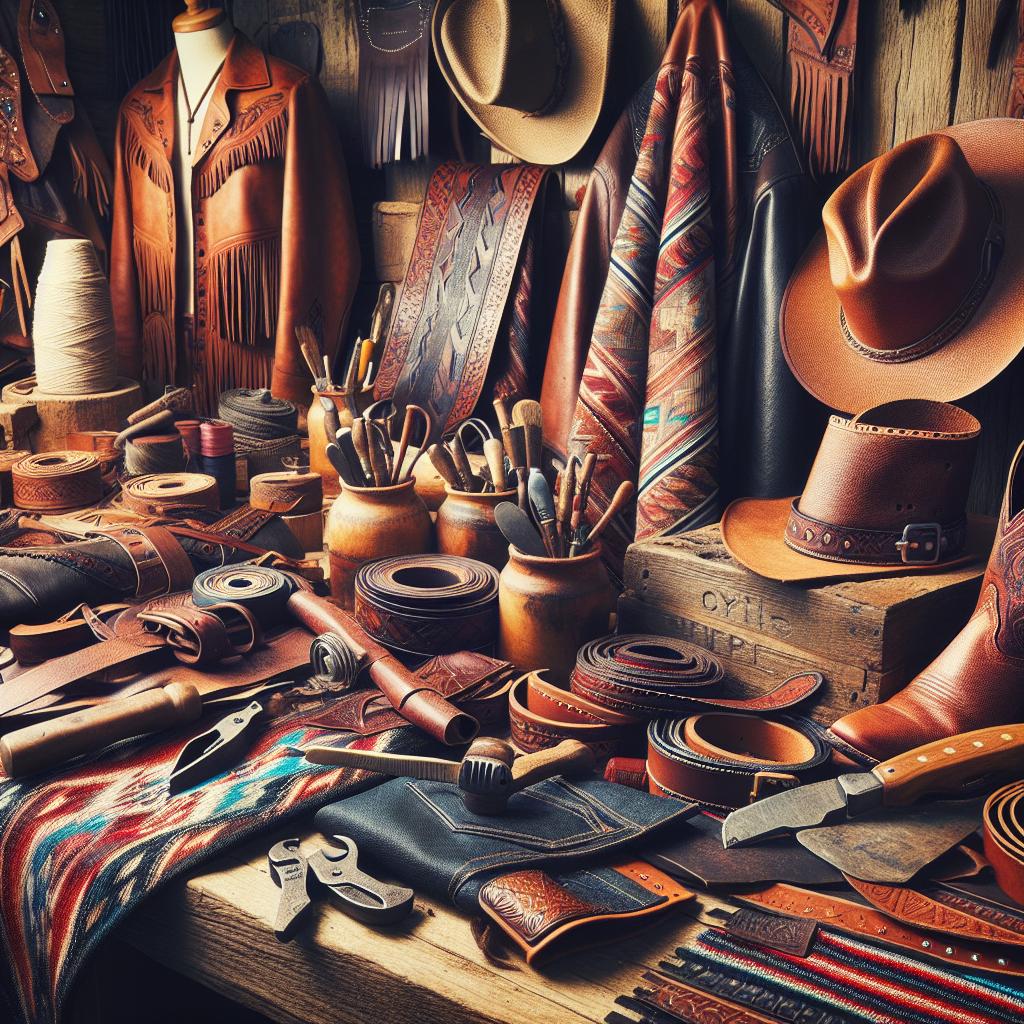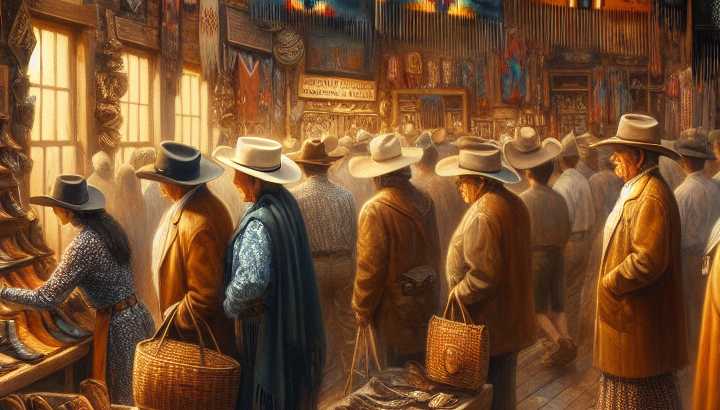Leatherworking Traditions in Southwest Apparel

Influence of Native American cultures on Southwest leatherworking
In the vibrant tapestry of American heritage, Native American cultures add rich and vibrant hues. And their influence on various art forms, particularly on Southwest leatherworking, is as palpable as a hot summer’s day in Arizona. Dare we say, the story of Southwest leatherworking without Native American artistry would be like a cowboy without his hat; it’s nigh on unthinkable!
Now, fasten your belt buckles, gentlemen, and hitch up your skirts, ladies because we’re going on a rollicking journey that might just make you blush at your leather purse or pair of boots.
Native American tribes, each brimming with imaginative fervor, poured their heart and soul into crafting functional yet beautiful items from leather. From the Apache to the Zuni tribes, the Southwest tribes had an enviable knack of turning a seemingly mundane hide into a work of sheer beauty. And before PETA gets ready to write an angry comment down below, we must remember, respect was always maintained for the animal, with every part used and nothing wasted.
Leather, a material often as tough and rugged as the majestic landscapes in which the Native Americans resided, was the canvas on which the tribesfolk showcased their art. They fashioned everything – right from embellished moccasins to studded saddlebags, intricate vests to beautifully dyed pouches. Today, these items have become a stalwart presence in any Southwest style worth its (tequila) salt, continuing to inspire contemporary designers who are keen to soak up this incredibly evocative cultural influence.
The influence of Native American cultures goes beyond the physical craft of leatherworking. It permeates deeper layers, into the symbolic significance of the motifs often seen adorning these leather creations. You see, Native Americans didn’t use emojis to express their feelings or thoughts, they had ingenious symbols.
“And in spite of the narrowest and most pragmatic of cultures, they proved themselves singularly adaptable”
~ John Buchan, The African Colony
A woven arrow might symbolize protection, a pair of crossed spears might signify unity, or a chiseled sun could stand for happiness and growth.
Now, if you thought this was all about the interplay of rusticity and refinement, humor me a little. More than a necessity, leatherworking was also used as a medium of storytelling. This was not ‘once upon a time’ sort of storytelling, mind you, but the type where mythology, personal experiences and tribal wisdom all danced together on the hide. Pictorial narratives or symbols told narratives of heroic feats, spiritual beliefs, and familial ancestry rendered more gripping than any Hollywood blockbuster and were carried down through generations.
Funny enough, those mean and moody bikers adorning the leather jackets need to tip their heavily tattooed hats off to these Native American tribes! That distressed leather look, with gorgeous tooling and sculpted embossments that seem to speak of a thousand stories? You’ve got it; it originated from the expert hands of these indigenous craftsmen.
Many a modern leatherwork enthusiast has sought to mimic the Native American motif’s style, the earthy tones, the vivid beadwork patterns, and the unique figurative forms reflective of indigenous ideals. From high-end fashion runways to the boho-chic trends and even to that charming little Etsy shop, Native American influences have strutted their way into the heart of leatherworks.
In the grand dish of cultural melting pot that is America, the Native American influence on Southwest leatherworking is akin to adding a dash of Tabasco sauce to a simmering pot of chili. Not enough to overwhelm, but just enough to add a signature heat that leaves a delicious, lasting impression.
And so, the next time you don your leather boots or sling on that fringed handbag, take a moment to appreciate the transformative journey of that piece of hide. From a rough-and-tough skin, tendered to a wearable work of art by Native American hands – it’s not just fashion; it’s a story echoing the rich history of the Southwest.
Like This? Try: Influence Of Native American Cultures On Southwest Leatherworking

Key leatherworking techniques in Southwest traditional apparel
Title: ‘Leather and Laces: The Quirky Quotient of Southwest Traditional Apparel Leatherworking Techniques’
Welcome to the wild, wide world of Southwest traditional apparel, where handcrafted perfection, rugged aesthetics, and colorful cultural backgrounds convene to stitch together a manifestation of tribal heritage. The Southwest tribes’ got flair, folks.
And the cherry on top of their indomitable spirit? Their riveting leatherworking techniques that take center stage in the fashion rodeo. These fashion cowboys aren’t shy to bedazzle with their leather couture; from the sleek Apache moccasins, the intricate Navajo pouches to the impressive Hopi katsina doll costumes, their espionage in leather crafting is irrefutable.
Let’s deep dive with a pinch of humor and a dash of fun to understand the top-notch leatherworking techniques of the Southwest tribes. Where’s Indiana Jones and his whip when you need a perfect leather metaphor?
1. Leather Tanning: The Fashion Recipe
First, we can’t just start with a moody-eyed cow. There’s prep work to be done, and it starts with the art of leather tanning. This trickiest bit of Southwest culinary couture takes rawhide and turns it slowly but surely into supple leather, while ensuring it doesn’t rot faster than you can say “howdy”.
The process involves hydrating, de-hairing, braining (which doesn’t involve gray matter but rather using animal fats), and smoking the hide. It often requires chants, pleasures, and the promise of being transformed into a fashion icon. Okay, the last part might be a slight exaggeration, but leather tanning is a hard-knock life that seldom gets the acknowledgment it deserves.
2. Beadwork and Embroidery: Bedazzle them Boss
Once the broken-in leather is ready, the Southwest tribes hit it with their bedazzler. No, not the one from late-night infomercials – we’re talking serious skill here. This ain’t your regular school ‘stick a bead, loop a thread’ procedure.
“Clive was indeed rich: he had a taste for ornate dress, and though neither so wealthy nor so gaily apparelled as rumour said, he was for a season the lion of London society”
~ Unknown, Unknown
They might as well be surgeons with the accuracy they execute each design.
Beadwork and embroidery endowed with symbolism and spiritual significance grace the leather beautifully. You’ll find jewelry-like patterns taking life in the form of ancestral figures, animals, and celestial bodies. So, think of a ‘wearable museum’ instead of just a mere piece of attire.
3. Fringing: Cutting-edge Chic
Ride ’em, cowboy, right onto the fringing extravaganza. Strips of carefully-cut leather hang like leafy curtains from chestplates, skirts, and boots, blowing dramatically in the desert wind. Yep, the Southwest tribes knew how to make an entrance long before the red carpet was a thing.
Fringing isn’t just for show, though. These leathery strands serve a purpose, such as water shedding in wet weather. Underestimate the fringe at your peril; these wild, free-flowing leather strands can be the underdog hero of Southwest traditional apparel.
So, there you have it: the who’s, what’s, and how’s of traditional Southwest leatherworking techniques. This industrious and artful craft is about much more than just fashion.
It’s a manifestation of a tribe’s spirit, pride, and heritage worn proudly across centuries. As we’ve seen, when it comes to turning rawhide into runway-ready art, the Southwest tribes certainly don’t ‘beat about the bush’.
So buckle up, partner, and ride into the sunset with newfound respect for the unique and intricate leatherworking skills of the Southwest tribes. Don’t forget, an Apache moccasin might just complete your festival attire!
Like This? Try: Key Leatherworking Techniques In Southwest Traditional Apparel
